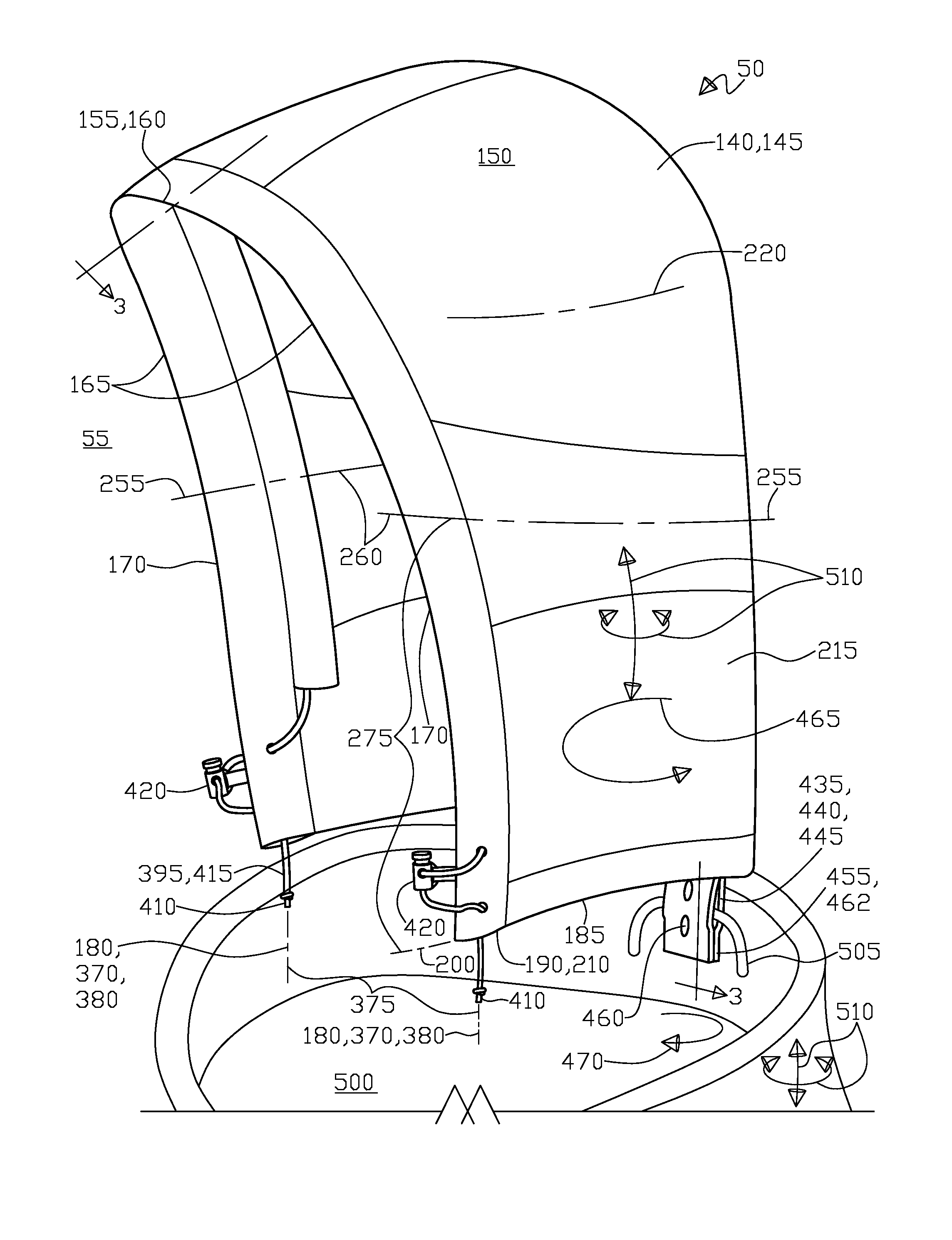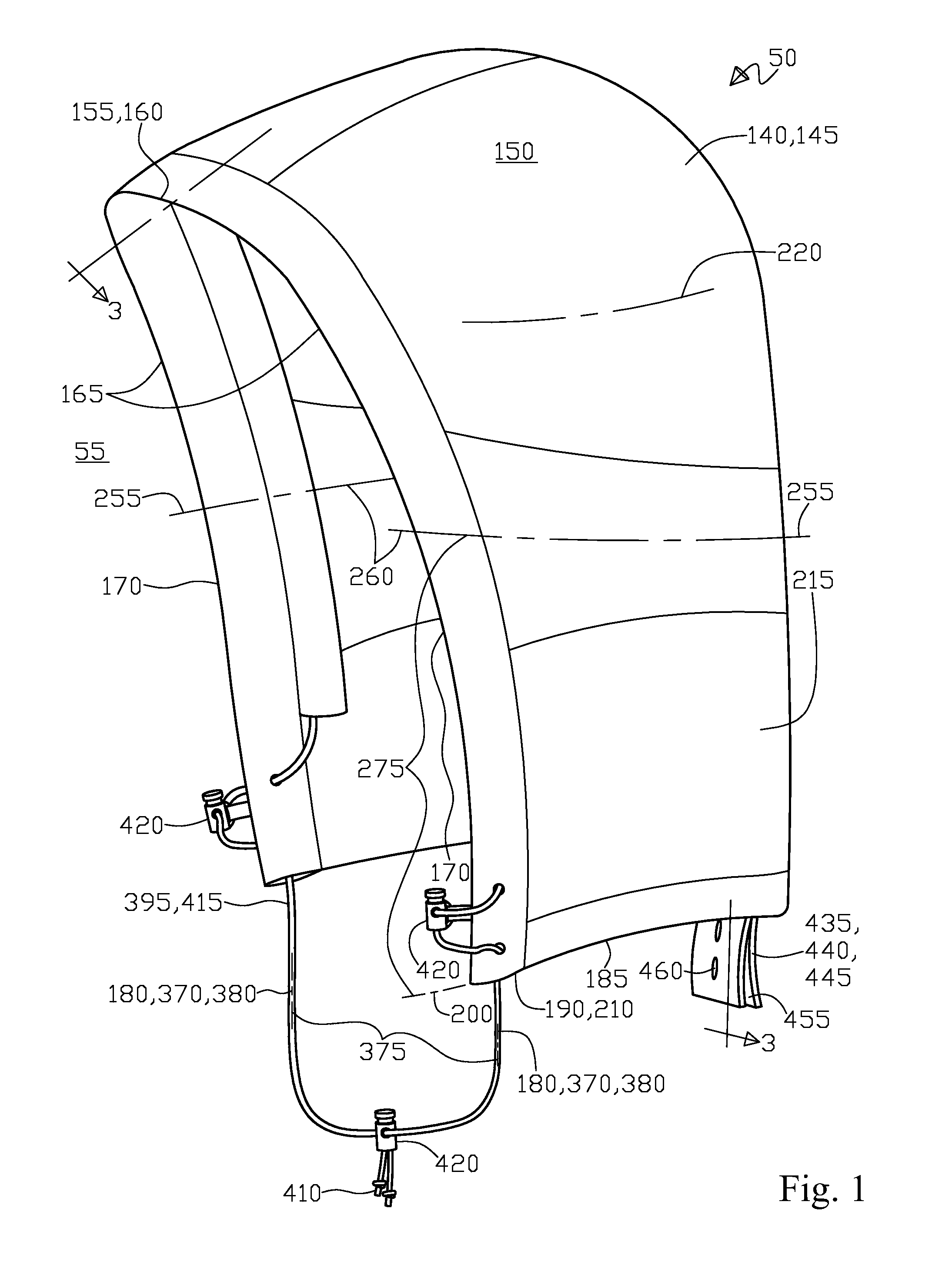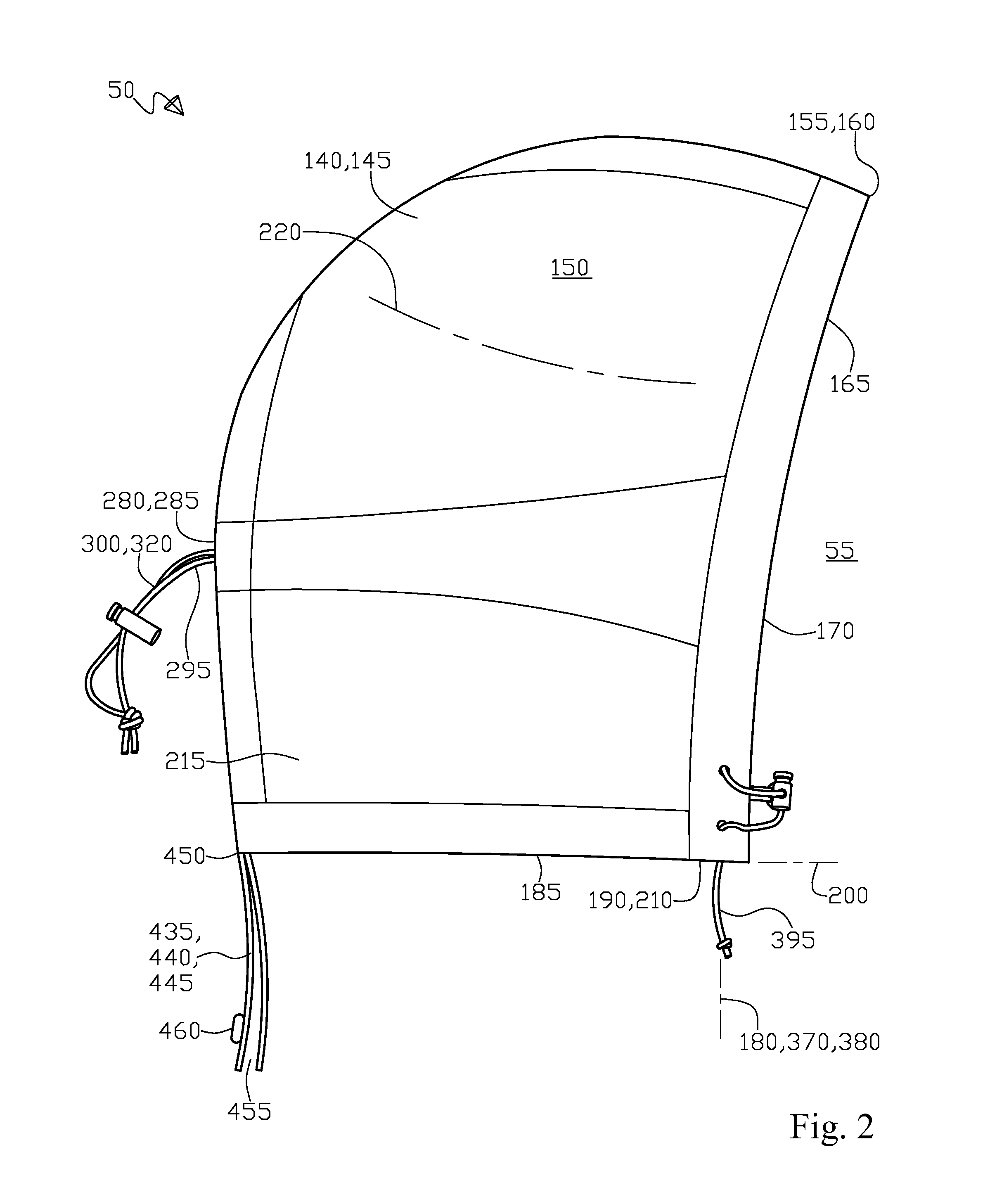Hood Apparatus
a technology of hood and hood, which is applied in the direction of headwear caps, hats, overgarments, etc., can solve the problems of limiting user's access, user's peripheral vision loss, and inconvenience for users
- Summary
- Abstract
- Description
- Claims
- Application Information
AI Technical Summary
Benefits of technology
Problems solved by technology
Method used
Image
Examples
Embodiment Construction
[0119]With initial reference to FIG. 1 shown is the side and front perspective view of the hood apparatus 50 in the external environment 55 wherein the hood apparatus 50 includes a flexible planar member 140 in a formed hood shape 145 with a head crown portion 150. Also FIG. 1 shows a lower forehead portion 155, an adjoining border 220 as between the head crown portion 150 and the surrounding sidewall 215, a lower forehead margin 155, a vertical margin 170, and a semi-circular terminating margin 185.
[0120]Continuing, FIG. 2 shows a side elevation view of the hood apparatus 50 in the external environment 55 wherein the hood apparatus 50 includes the flexible planar member 140 in the formed hood shape 145 with the head crown portion 150. Further, FIG. 2 shows the lower forehead portion 155, the adjoining border 220 as between the head crown portion 150 and the surrounding sidewall 215, the lower forehead margin 155, the vertical margin 170, and the semi-circular terminating margin 185...
PUM
 Login to View More
Login to View More Abstract
Description
Claims
Application Information
 Login to View More
Login to View More - R&D
- Intellectual Property
- Life Sciences
- Materials
- Tech Scout
- Unparalleled Data Quality
- Higher Quality Content
- 60% Fewer Hallucinations
Browse by: Latest US Patents, China's latest patents, Technical Efficacy Thesaurus, Application Domain, Technology Topic, Popular Technical Reports.
© 2025 PatSnap. All rights reserved.Legal|Privacy policy|Modern Slavery Act Transparency Statement|Sitemap|About US| Contact US: help@patsnap.com



